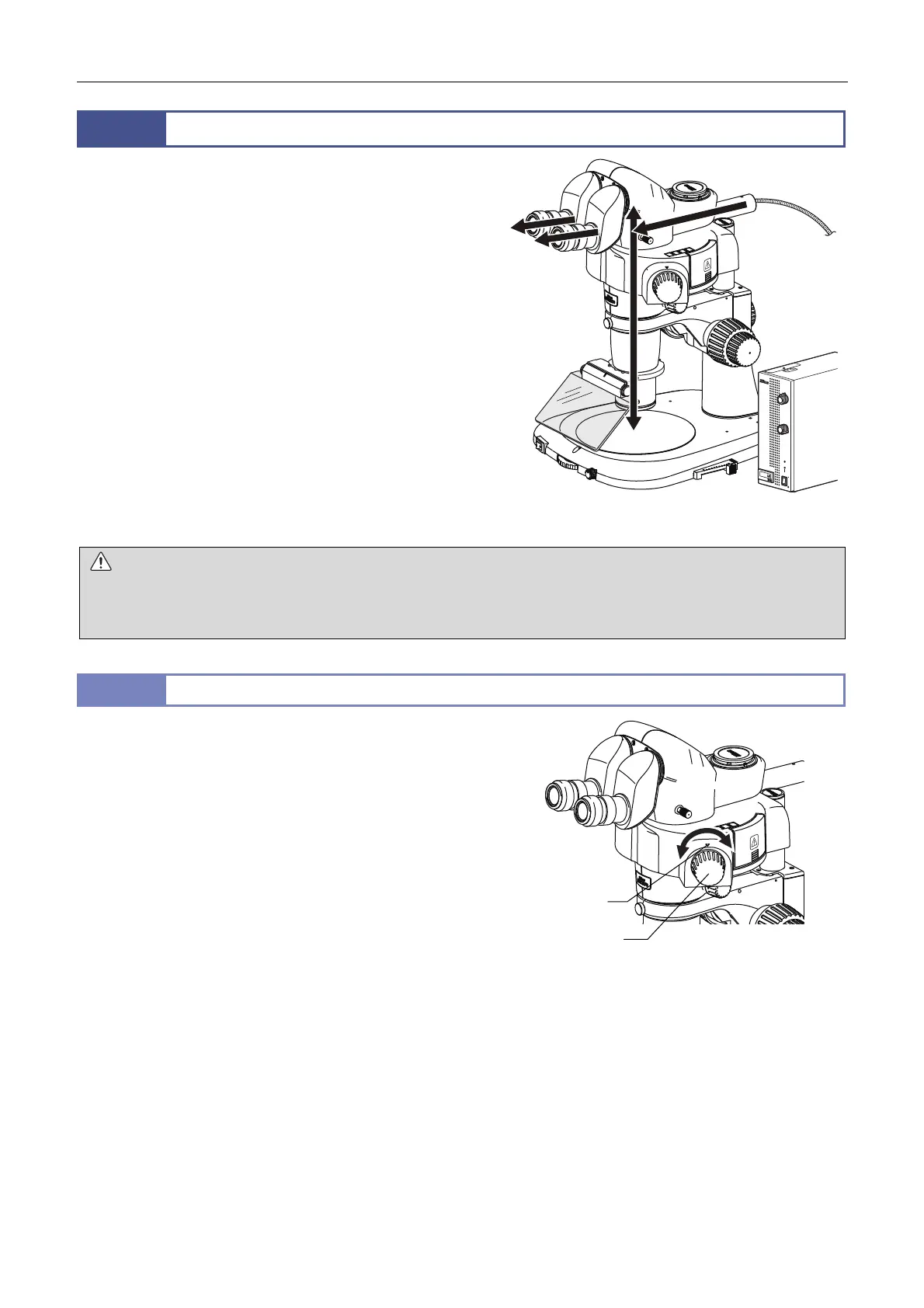Chapter 3 Specific Operations
20
11
Using Epi-Fluorescence Illumination
Epi-fluorescence microscopy used for observing fluorescence
images requires an optical element such as a fluorescence filter
and a bright light source such as mercury lamp.
With a filter cube attached to the turret inside the device, the filter
cube is brought into the optical path by the rotation of the turret,
resulting in the generation of epi-fluorescence illumination. The
light source is a precentered high-intensity mercury lamp.
Illumination led from the light source to the device by the HG fiber
passes through a fluorescence filter and emits excitation light to
the sample so that fluorescent images can be observed.
For operations related to light sources such as brightness
adjustment, refer to the instruction manuals of the light sources.
INTENSILIGHT
C
-
HGFI
LAMP
ND
1
2
4
32
16
8
SHUTTER
POWER
RUN TIME hrs.
Epi-fluorescence illumination with the epi
fluorescence attachment
WARNING
The light source used with the epi fluorescence attachment (mercury lamp) requires special care during handling because of its
characteristics. Make sure you are familiar with and observe all warnings and cautions described at the beginning of this
instruction manual.
11.1
Switching Filter Cubes
Up to four filter cubes can be attached to the turret of the epi
fluorescence attachment. Turn the turret using the filter cube
switching knob. Select a turret address number (1 to 4) indicated
on the knob to bring the filter cube corresponding to the address
number into the optical path.
Switching filter cubes
Index mark
Filter cube
switching knob

